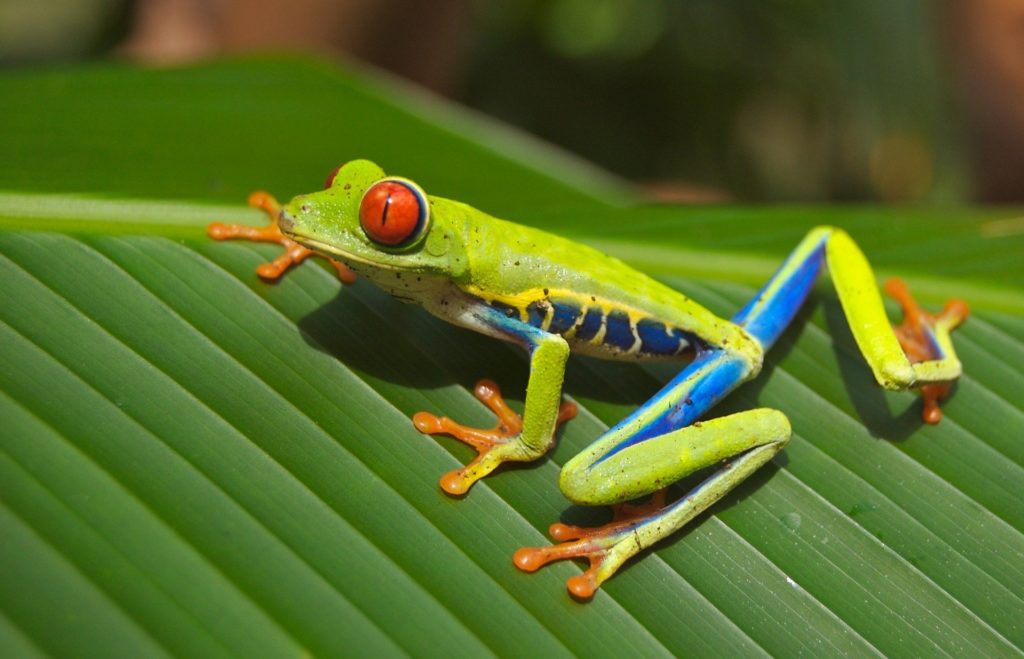New findings provide first evidence of amphibian declines affecting human health
2 December 2020

New research finds the global collapse of frogs and other amphibians exacerbated malaria outbreaks in Costa Rica and Panama during the 1990s and 2000s.
Credit: David Mark from Pixabay.
AGU press contact:
Lauren Lipuma, +1 (202) 777-7396, [email protected]
Contact information for the researchers:
Joakim Weill, University of California Davis, [email protected]
WASHINGTON—The global collapse of frogs and other amphibians due to the amphibian chytrid fungus exacerbated malaria outbreaks in Costa Rica and Panama during the 1990s and 2000s, according to new research.
The findings provide the first evidence that amphibian population declines have directly affected human health and show how preserving biodiversity can benefit humans as well as local ecosystems.
“This is like a small building block showing that there could be unwanted human health consequences of amphibian collapses, and so we should really be trying to account for these impacts,” said Joakim Weill, an environmental economist at the University of California Davis who will present the results Tuesday, 8 December at AGU’s Fall Meeting 2020. “We really view this as an important first step leveraging this type of interdisciplinary work, trying to tease out causal relationship between environmental change and human health.”
The global spread of Batrachochytrium dendrobatidis, an extremely virulent fungal pathogen known as amphibian chytrid fungus, has been responsible for massive worldwide die-offs of amphibians since the 1980s. A 2019 study found the fungal disease has played a role in the decline of over 500 amphibian species over the past five decades and presumably caused extinctions of 90 species. The authors of that study referred to the die-offs as “the greatest recorded loss of biodiversity attributable to a disease.”
Chytrid fungal disease traveled across Costa Rica and Panama from the early 1980s through the 2000s. Both countries experienced large increases in malaria cases following this rolling collapse of amphibian populations.
In the new study, researchers investigated whether these malaria outbreaks were connected to the amphibian declines because amphibians eat mosquitoes that transmit the disease. They compared the timing and spatial extent of amphibian die-offs with malaria cases in Costa Rica and Panama at the county level from 1976 to 2016.
The researchers found a significant increase in malaria cases in these countries that started immediately after the amphibian die-offs began and peaked 5 to 6 years after. In 1980, there were fewer than 1,000 cases of malaria in the two countries, but cases began to rise in 1990 and peaked at about 7,000 in Costa Rica in the mid-1990s and 5,000 in Panama in the mid-2000s.
Malaria cases went back down after this peak, and the researchers suspect this is due to local public health interventions like spraying of insecticides.
The results show some of the first evidence that species extinctions and biodiversity loss can directly affect human health, according to the researchers.
Other environmental factors like deforestation also played a role in exacerbating the outbreaks, but no other factor had as much of an impact on malaria cases as the amphibian declines, according to the study.
“We are able to find what really seems to be this striking causal relationship between amphibian declines and malaria,” Weill said. “It’s pretty incredible that we are finding anything in the first place, because these are events that occurred 40 years ago and the right people were in the right place to make observations about amphibian populations and human disease that we can use today to arrive at new insights.”
###
AGU (www.agu.org) supports 130,000 enthusiasts to experts worldwide in Earth and space sciences. Through broad and inclusive partnerships, we advance discovery and solution science that accelerate knowledge and create solutions that are ethical, unbiased and respectful of communities and their values. Our programs include serving as a scholarly publisher, convening virtual and in-person events and providing career support. We live our values in everything we do, such as our net zero energy renovated building in Washington, D.C. and our Ethics and Equity Center, which fosters a diverse and inclusive geoscience community to ensure responsible conduct.
Notes for Journalists
Joakim Weill will present the results of this work at AGU Fall Meeting 2020. The oral presentation has been pre-recorded and will be available online starting 1 December to members of the press who are registered for Fall Meeting 2020. Register for the meeting here. A live Q&A with Weill will take place on Tuesday, 8 December during a scientific session on relationships between human and geophysical processes.
Session information: GC033 – Connecting Cause and Effect in Analyses of Coupled Human and Geophysical Systems I, Tuesday, 8 December, 20:30-21:30 PT.
Presentation abstract: GC033-06 – Amphibian Collapses Exacerbated Malaria Outbreaks in Central America
For information about Fall Meeting 2020, including the schedule of press events, visit the Fall Meeting 2020 Media Center.
Neither the presentation nor this press release is under embargo.